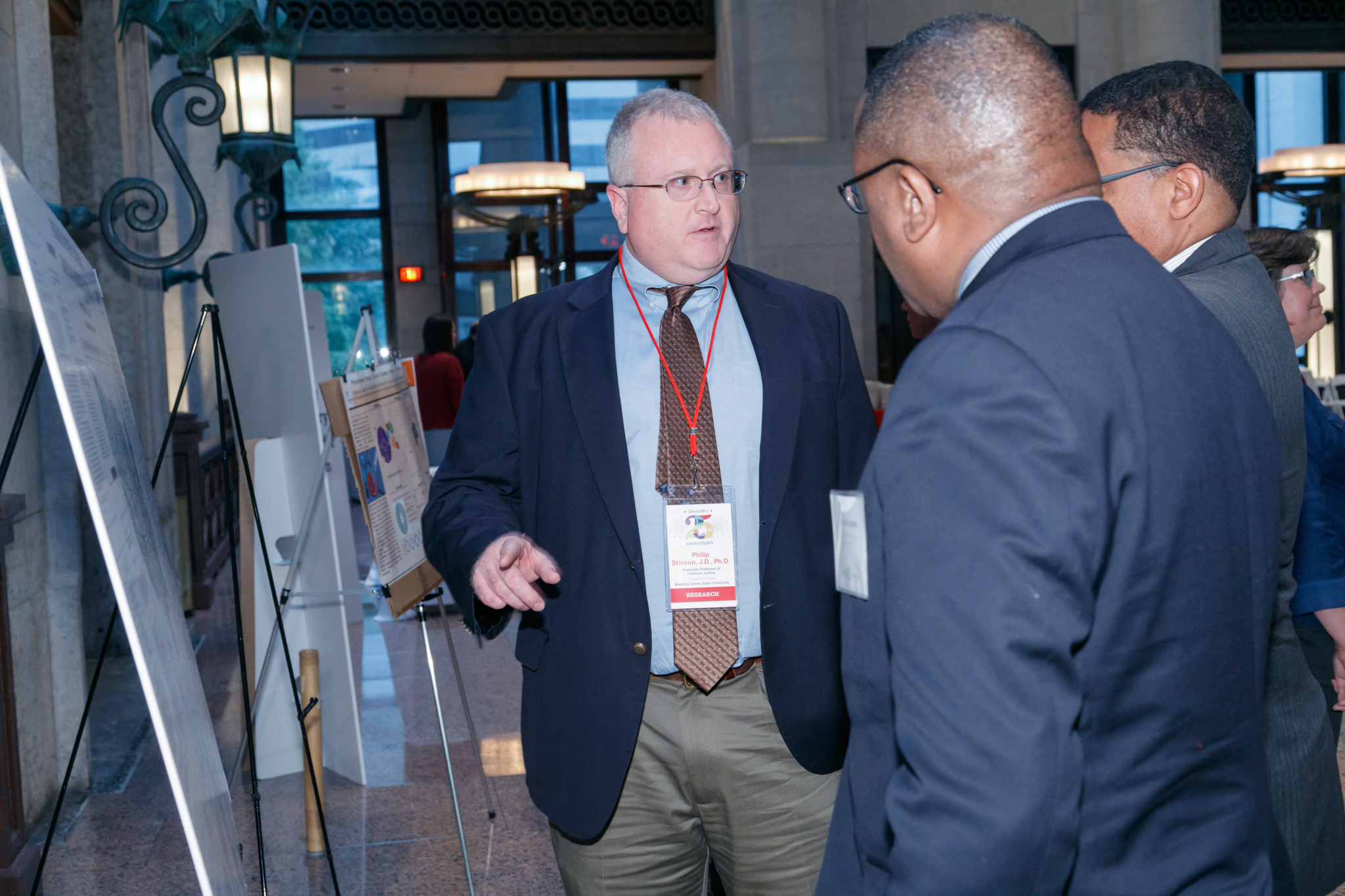About three years ago, standing in the hallway outside his office, Philip Stinson, Ph.D., asked a colleague when the phone calls, emails, and national curiosity would stop.

“He said, ‘It’s not going to stop,’” Stinson said. “I thought he was joking, but it hasn’t stopped.”
Type Stinson’s name into OhioLINK's Electronic Journal Center and it’s quickly apparent his research involves one of the hot-button topics in the United States: police crimes.
Stinson—an associate professor in Bowling Green State University’s Human Services Department in the Criminal Justice Program—began studying and tracking crimes committed by law enforcement officers in 2005 as a graduate student. Using Google news engines, relatively new at the time, he recorded more than 2,000 arrest cases from 2005 to 2007 for his dissertation.
When he arrived at BGSU in the fall of 2009, Stinson continued to collect the data, and in 2011 he received a federal grant from the National Institute of Justice to continue the work. In 2015, his research group, the Police Integrity Research Group, began receiving funding from the Wallace Action Fund of Tides Foundation to keep doing the research, which includes creating a publicly available database to give anyone the ability to comb through his data.
“It’s amazing nothing was out there before,” Stinson said. “There are no government agencies that regularly collect data and disseminate data on crime by police officers, or frankly any misconduct by police officers.”
While his work began in 2005 as a quantitative content analysis project for his doctoral dissertation, it has evolved into a national goldmine of information regarding police crime in America.
Much of Stinson’s data comes from numerous news databases and court records. His research group focuses on patterns and trends, a difficult task that requires a great deal of data over a long period of time.
His research team has more than 270 variables it tracks in arrest cases and adds about 1,100 cases a year.
That comes in handy when a major news story breaks, such as in August 2014 when a police officer in Ferguson, Missouri shot and killed an 18-year-old black man.
That incident set off a national media firestorm.
“The media started to focus on the data I had to see if there was anything useful,” Stinson said. “I was able to go back and figure out all the cases we had in which an officer had been charged with murder or manslaughter, which is frankly what the media was starved for.”

Not long after that, the Washington Post contacted Stinson to see if he’d be willing to work with them on an editorial project about police shootings.
The stories began appearing in April 2015 and led to a Pulitzer Prize for national reporting.
On a daily basis, Stinson is contacted by national media, including everyone from the Huffington Post to the New York Times to ESPN, and his articles are sought after from higher education institutions, media members, and the general public. His research has been featured in everything from HBO’s Last Week Tonight with John Oliver to NPR’s All Things Considered.
“Everybody is paying attention, people from all walks of life,” said Stinson, who has been quoted in more than 600 newspaper articles in the past four years and has appeared on television news interviews 56 times along with 62 radio interviews. “If I sat down several years ago and said, ‘I’m going to find a way to get data from my research into the Wall Street Journal every other month, or the front page of the Washington Post three times, in the New York Times, I couldn’t do it. I couldn’t plot it out. It’s just been amazing.”
Stinson is also a major advocate for BGSU’s Jerome Library, a founding member of OhioLINK. In the past, he was the chair of the Faculty Senate Library Advisory Council and nominated the Jerome Library for the Provost’s Unit Recognition Award, which the Library won.
According to Collen Boff, associate dean at Jerome Library, Stinson remains a strong advocate for library services. His advocacy for academic libraries extends to OhioLINK as well.
“I think that faculty and students quite often are not aware of the depth of the resources that are available through OhioLINK,” Stinson said. “Librarians can talk until they’re blue in the face about what a great resource it is, but until somebody sits down and wrestles with a research question and takes the opportunity to check out what resources are there, people just don’t think about it. And that’s unfortunate.”
###
Written by Ross Bishoff
Established in 1992, the Ohio Library and Information Network (OhioLINK) is Ohio’s statewide academic library consortium and serves more than 600,000 end users. A member of the Ohio Technology Consortium of the Ohio Department of Higher Education, OhioLINK provides a competitive advantage for Ohio’s higher education community by cooperatively and cost-effectively acquiring, providing access to, and preserving an expanding array of print and digital resources, and by centrally hosting digital content. Together, OhioLINK and its member libraries provide users access to nearly 50 million books and other library materials, more than 100 electronic research databases, more than 81,000 e-books, thousands of images and videos, and millions of electronic journal articles.

